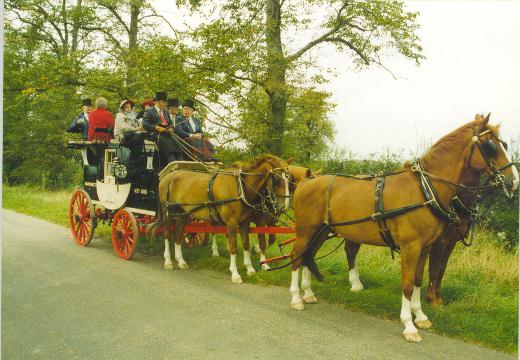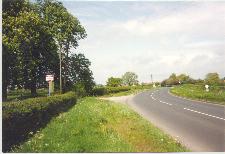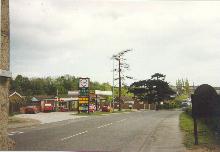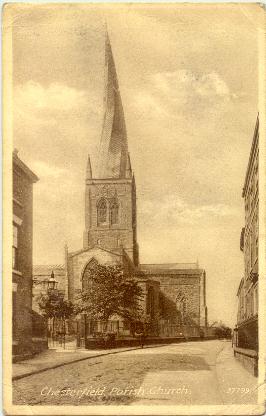
|

|

|
Early in the morning of Wednesday the 9th June 1824 a letter arrived by
the overnight mail-coach from London and was delivered to his house. The letter, from his solicitor Beevor
regarding some of the land of the Somerton Castle estate which was being sold, warranted an immediate
reply. Setting pen to paper whilst the 'postman' waited, John timed his letter at 4 a.m. and he scribbled
at the bottom of the page, "I am in the greatest haste, as I am afraid (of) being to late for the
Champion Coach to Manchester ... "
The Champion left the Castle and Falcon in Beaumont Street (now London Road), Newark, at 5.30 a.m. There were very important differences between the stage-coach and the mail-coach, both in design and construction, and also in operation. Mail-coaches were lighter for extra speed and they could not (or should not, on pain of a heavy fine for the gate-keeper) be stopped at the toll-gates - hence the origin of the coaching horn to announce their impending arrival! Stage-coaches could be stopped although in practice they seldom were. The Champion was a stage-coach and being constructed and in operation before 1835, the year the 'bent perch' was introduced to lower the centre of gravity and produce a safer more comfortable ride, it would of had a very high appearance sitting on a straight perch (the bar that joined the front and rear axles) with the consequence that the coaches were top heavy and very prone to overturning. As far as can be determined, although not from any specific substantiate records, it would seem that the livery was probably yellow. The fare, again as yet unsubstantiated, would probably of been about 3d (three old pence) per mile outside, 5d (five old pence) per mile inside. Thus, the fare for the impending journey of some 76 miles would probably be around £1..10s (one pound ten shillings) [150p] inside and 18s (eighteen shillings) [90p] outside. It is debatable whether the more comfortable ride was inside, on slatted uncushioned seats and the stench of travel sickness, or outside on cushioned seats but open to the weather, for the 10½ hour journey at an average speed of 7 miles per hour. 1824 was a very interesting year. On the 30th January the coach was one of around twenty operating out of Manchester by LEARY & CO. but Mr. Leary had recently died and the company continued to operate "for the benefit of his widow and children". By the 19th March that same year these services were operated by JOHN JONES & CO. A contemporary Manchester newspaper includes the entry: NOTTINGHAM, NEWARK, &c. - The Champion, every morning at Half-past Six o'clock, through Stockport, Disley, Chapel-en-le-Frith, Stoney Middleton, Baslow, Chesterfield, Mansfield, to the White Lion Inn, Nottingham, and Castle and Falcon Inn, Newark. |
 On through Edingley gate and the villages
of Edingley, Farnsfield and Rainworth before beginning the long climb through the Rainworth gate (a six or eight sided house with a large cedar tree and
known latterly as the pen and ink-pot).
On through Edingley gate and the villages
of Edingley, Farnsfield and Rainworth before beginning the long climb through the Rainworth gate (a six or eight sided house with a large cedar tree and
known latterly as the pen and ink-pot).  Pressing on - no time to loose - must be in Mansfield for an 8.30 a.m. departure. If we're late there'll be no breakfast! Mansfield was in turmoil. A huge
re-development programme (it's not only a twentieth century phenomenon) including the installation of gas lighting which was reputed to be the
finest in the kingdom, was under way. Indeed, the 10th July 1824, just one month after our journey, the first gas lamps were lit. Arriving in the
centre of Mansfield, the coachman skillfully negotiated the narrow entrance into Swan Yard and Samuel Stirrup's Coach Office. The Swan was one of
a number of coaching inns in the vicinity and it alone had stabling for a thousand horses. The logistics of dealing with something like thirty
coaches a day each requiring four horses must have called for split-second precision.
Pressing on - no time to loose - must be in Mansfield for an 8.30 a.m. departure. If we're late there'll be no breakfast! Mansfield was in turmoil. A huge
re-development programme (it's not only a twentieth century phenomenon) including the installation of gas lighting which was reputed to be the
finest in the kingdom, was under way. Indeed, the 10th July 1824, just one month after our journey, the first gas lamps were lit. Arriving in the
centre of Mansfield, the coachman skillfully negotiated the narrow entrance into Swan Yard and Samuel Stirrup's Coach Office. The Swan was one of
a number of coaching inns in the vicinity and it alone had stabling for a thousand horses. The logistics of dealing with something like thirty
coaches a day each requiring four horses must have called for split-second precision.
 with
its church with the crooked spire and the Angel Inn. It is now 10 a.m. and another quick change (it was not unusual for a team
of four to be changed in 90 seconds!) almost without stopping, before heading off through the peaks to Baslow and on to Stoney Middleton at 12 noon.
with
its church with the crooked spire and the Angel Inn. It is now 10 a.m. and another quick change (it was not unusual for a team
of four to be changed in 90 seconds!) almost without stopping, before heading off through the peaks to Baslow and on to Stoney Middleton at 12 noon.
This page
contains links to other web-sites. If you experience problems
with an onward link,
please e-mail me with details so that the problem can be rectified.
Thank you.